Publishing children’s books on Kindle just became a little easier.
While authors have long been able to post illustrated books through Amazon’s Kindle Direct Publishing, the books were simply text and images. However, you can now add a little interactivity to your book in the form of pop-up text, thanks to the Kindle Kids’ Book Creator (KKBC), the newest addition to Amazon’s arsenal of publishing tools.
While you can publish an illustrated book on Kindle without using KKBC*, the new program offers two cool opportunities to make your book more fun and accessible for young readers.
Here’s a quick illustrated guide to the new features.
Getting started with KKBC
Once you download KKBC for free from Amazon, your first task is to set up the book. Enter the title, author, destination folder on your computer (which must be empty), page orientation and other details.
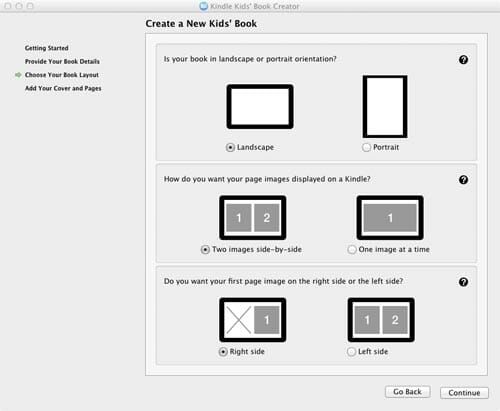
Next, import your book cover as a PDF, JPG, TIF or PNG, followed by your page images. This can be done en masse using a multiple-page PDF — which I recommend, as it’s easier — or as individual images.
If you opt to upload individual images, the files must be at least 400 by 400 pixels. To keep them in the correct order, make sure you’ve numbered your image file names, because KKBC adds them alphabetically. In the example below, I have added a single interior page image using the Add Page button.
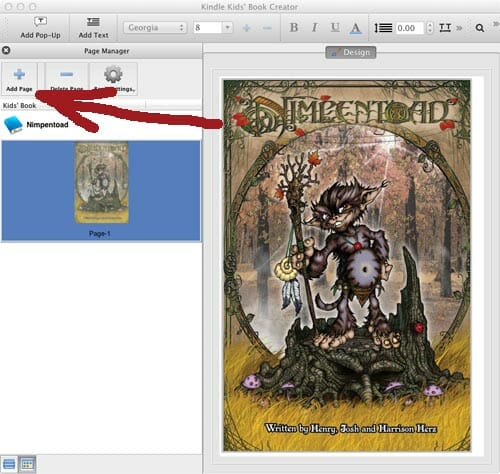
Using pop-up text to improve legibility
Suppose I feel that the ornate font at the top of this image might be illegible for young readers. I click on the Add Pop-Up button, and a rectangular text box appears on the image. I can type in whatever text I choose, then resize and reposition the box and control its font, size and color.
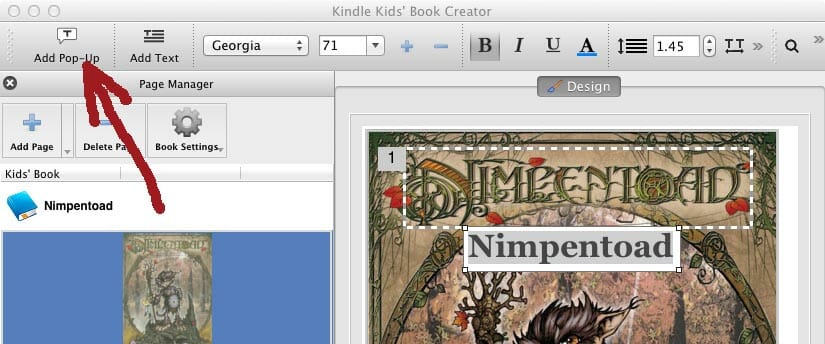
Add your story’s text
The Add Text feature will, not surprisingly, insert text anywhere you’d like on the page. This might be where you add the text of your story to the correct area of each page.
When a reader double-taps this text on his Kindle, he’ll trigger a pop-up, which is useful — while older readers might be able to decipher text within an illustration, younger ones might need larger text or a white background. Note that any “tappable” zones you create cannot overlap.
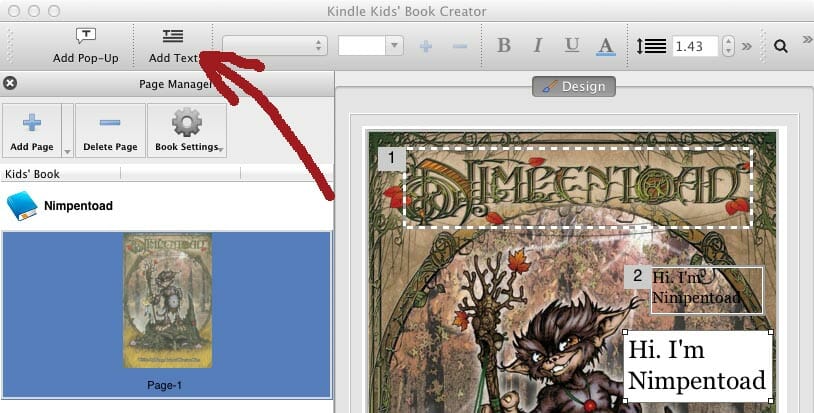
Use pop-up text in creative ways
You can use the Add Pop-Up feature anywhere on the page, not just on text. Perhaps you want to make regions of the image clickable to teach vocabulary to young readers, or to hide plot clues. The sky’s the limit!
For example, I can highlight the staff in this image so that when a reader double-taps it, they see a pop-up with the words “This is my staff.”
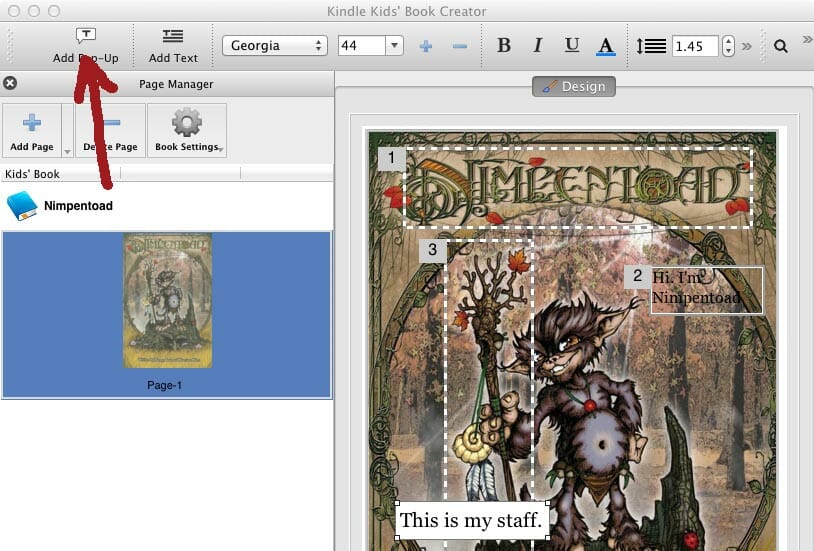
Test your pop-ups in the Kindle Previewer
When you’re done adding pop-ups, save the file. Click on View Preview to launch the separate Kindle Previewer application, which emulates how your book will appear on different Kindle devices.
Here’s how my book would look on a Kindle Fire HD. Note the “Hi. I’m Nimpentoad” text we added with the Add Text button.
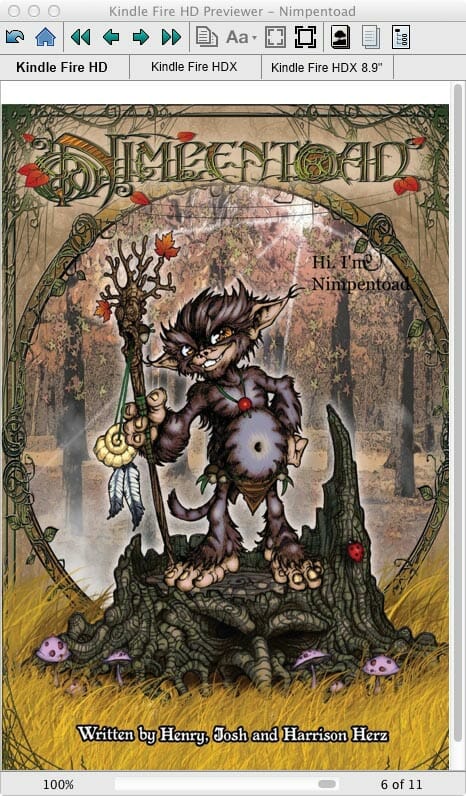
Double-tapping on the ornate text at the top triggers a more legible pop-up.
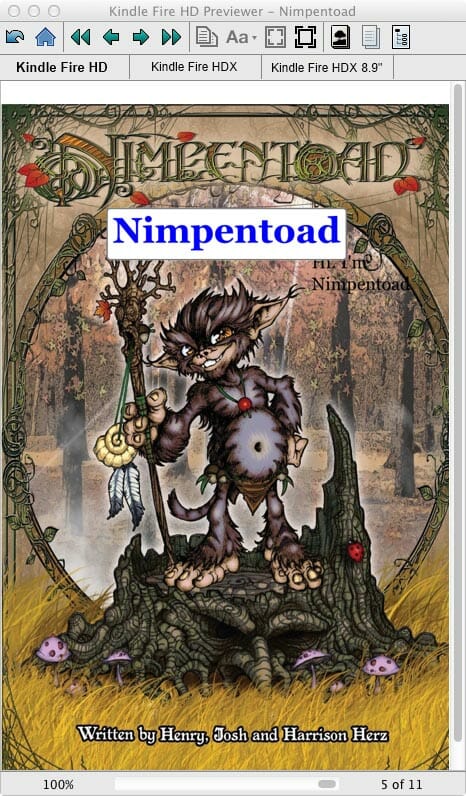
Double-tapping on the “Hi. I’m Nimpentoad” text triggers a pop-up that’s easier to read. Note the wrapping text, which highlights the importance of testing your book on all devices in the Previewer to ensure it displays properly. In this case, I’d have to go back in and edit the font size for a better fit.
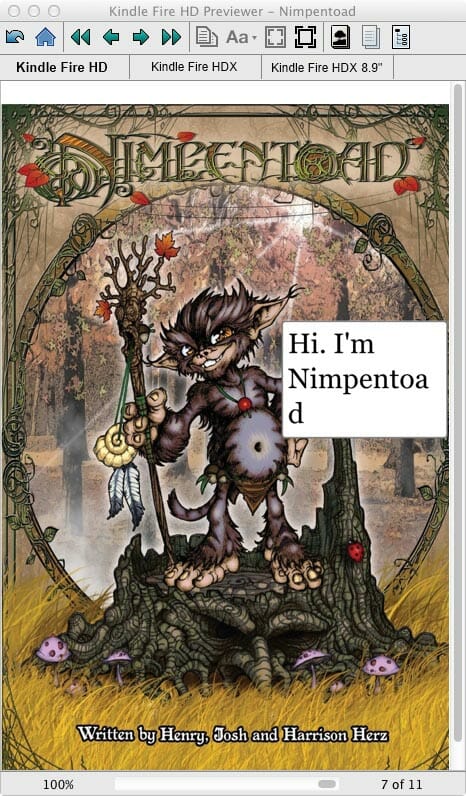
Finally, if the reader double-taps the staff, they would trigger the associated pop-up.
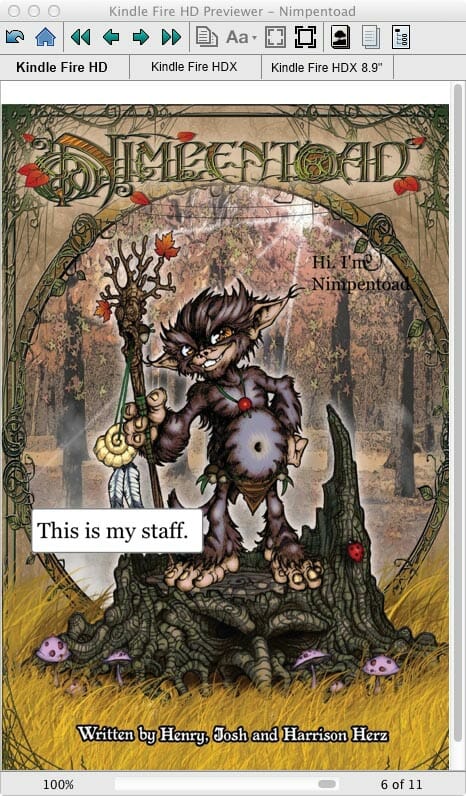
Adding pop-up text helps you improve your reader’s experience of your book, and adds some interesting interactivity. Enjoy playing with Kindle Kids’ Book Creator!
*Want to publish illustrated books on Kindle without using this program? Simply save your Microsoft Word document as HTML, then run it through the free KindleGen application to create a .mobi format file. Don’t want to deal with conversion? Simply upload your Word or HTML files to Kindle and the platform will take care of the rest — though you’ll want to check the formatting.
Have you used Kindle Kids’ Book Creator yet? What do you think of the idea?
Looking for a quick introduction to publishing picture books on Kindle? Check out this free mini e-course from Children’s Book Insider.







